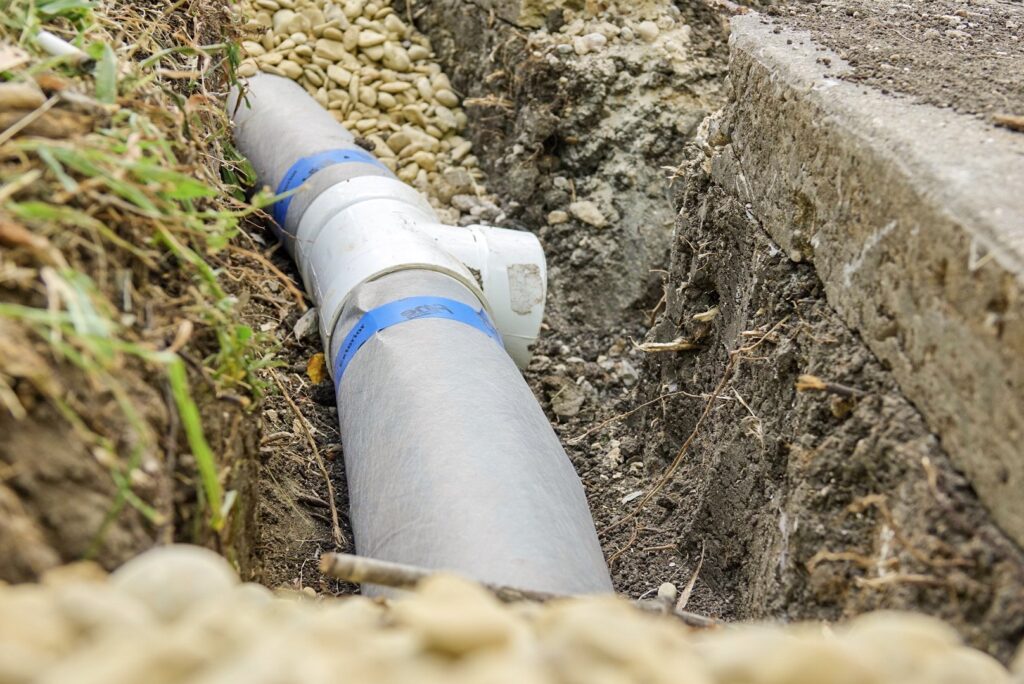How Does Weather Affect Foundation Drainage? Essential Preparation Tips for Homeowners
Weather patterns across Texas have become increasingly unpredictable, making proper foundation drainage more critical than ever for protecting your home’s structural integrity. At Steady House Foundation Repair, we’ve witnessed firsthand how extreme weather conditions—from heavy rainfall and flooding to prolonged drought—can devastate foundations when proper drainage systems aren’t in place. With over 40 inches of precipitation falling in the Dallas-Fort Worth area in 2024, including peaks of over seven inches in May, homeowners need to understand how weather impacts their foundation and take proactive steps to protect their investment.
Our team of foundation specialists has been serving Texas communities for years, helping homeowners navigate the unique challenges posed by our region’s clay soils and volatile weather patterns. We understand that your home is your most valuable asset, and we’re committed to providing the expertise and solutions you need to keep it safe and stable year-round.

Understanding Weather’s Impact on Foundation Drainage
Weather affects foundation drainage in multiple ways, creating both immediate and long-term challenges. Heavy rainfall and flooding are primary culprits behind foundation damage. When soil around your foundation becomes saturated with water, it expands and exerts pressure on foundation walls, causing them to crack or bow. Water accumulation can seep into existing cracks and cause further damage by eroding the soil beneath the structure.
Clay soils, particularly common in Texas, expand when wet and contract when dry. This cyclical movement, known as heaving and settling, can place immense stress on foundations. Water accumulating in soil around a foundation exerts hydrostatic pressure on foundation walls, which can lead to structural damage including bowed walls and water infiltration.
Drought conditions create equally serious problems. Hot weather dries out soil, causing it to shrink and create gaps around foundations. This soil contraction can cause underground pipes to crack and foundations to settle unevenly. Dry conditions followed by heavy rain intensify these issues, as soil rapidly absorbs water and exerts uneven pressure on the foundation.
Seasonal Weather Challenges
Each season brings unique drainage challenges that Texas homeowners must prepare for. Spring often brings heavy rainfall that saturates soil around foundations, increasing hydrostatic pressure and potentially causing cracks and water infiltration.
Summer’s extreme heat causes soil to dehydrate and shrink, creating gaps around foundations. Temperature extremes can cause foundation materials to expand and contract, leading to structural weakening. Summer also brings sudden, intense thunderstorms that can overwhelm inadequate drainage systems.
Fall combines temperature fluctuations with increased precipitation and falling leaves that can clog gutters and drainage systems. Tree roots actively seek moisture during this season, potentially affecting foundation stability. Winter brings freeze-thaw cycles that can crack pipes and disrupt drainage flow.
Essential Drainage Preparation Strategies
Surface Water Management
Controlling surface water is critical for foundation protection. The ground surface should slope away from your house at between ½ and 1 inch per foot for at least 6 feet—10 feet is better. This proper grading prevents water pooling and directs runoff away from your home.
Install and maintain complete gutter systems with properly sized gutters and downspouts. Clean gutters at least twice yearly to ensure proper function. Downspout extensions should direct water at least six feet from the foundation to reduce pooling risk.
Subsurface Drainage Solutions
Installing proper drainage systems around your home provides the best protection from water damage. French drains and perimeter drainage systems effectively divert water away from foundations before problems occur. These systems should include perforated drainpipe surrounded by gravel and wrapped in filter fabric.
For homes prone to water accumulation, sump pump systems provide additional protection by automatically removing excess water. Interior drainage systems can work with exterior solutions for comprehensive protection.
Soil Moisture Management
Maintaining consistent soil moisture levels is crucial for foundation stability. During dry periods, water soil around your foundation to prevent excessive shrinkage. Use soaker hoses for slow, deep watering that reaches at least 6 inches into soil. Water at dawn or dusk to minimize evaporation, maintaining consistent schedules during hot, dry weather.
Professional Assessment and Maintenance
Regular foundation inspections help identify potential weather-related damage before it becomes severe. Look for cracks in walls or floors, sticking doors and windows, or water infiltration. Early detection allows prompt repairs that prevent minor issues from becoming major structural problems.
Professional foundation assessment is particularly important before severe weather seasons. Our experienced team can evaluate current drainage systems, identify vulnerabilities, and recommend improvements. We assess soil conditions and provide guidance on proper moisture management.
Manage vegetation properly by planting trees and shrubs at least 5 feet from your foundation to prevent root damage. Choose drought-resistant plants requiring less water. Mulching helps preserve soil moisture and regulate temperature around foundations.
Don’t wait for weather damage to threaten your home’s foundation. Contact Steady House Foundation Repair today for a comprehensive drainage assessment and personalized protection plan. Our experienced team understands Texas weather patterns and soil conditions, and we’ll implement effective drainage solutions that protect your investment year-round. Call us now to schedule your consultation!
